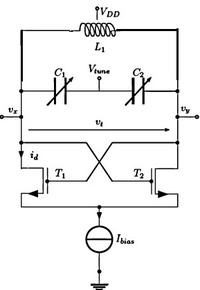palmeiras
Full Member level 6
- Joined
- Feb 22, 2010
- Messages
- 375
- Helped
- 61
- Reputation
- 122
- Reaction score
- 50
- Trophy points
- 1,308
- Location
- South America
- Activity points
- 4,199
Hi guys,
When designing a traditional LC tank oscillator whose oscillation frequency is given by 1/√LC:
How can I chose the ratio L and C? Considering that I have no area restriction and I can design the inductor with any size and shape.
Thanks! best regards.
When designing a traditional LC tank oscillator whose oscillation frequency is given by 1/√LC:
How can I chose the ratio L and C? Considering that I have no area restriction and I can design the inductor with any size and shape.
Thanks! best regards.
